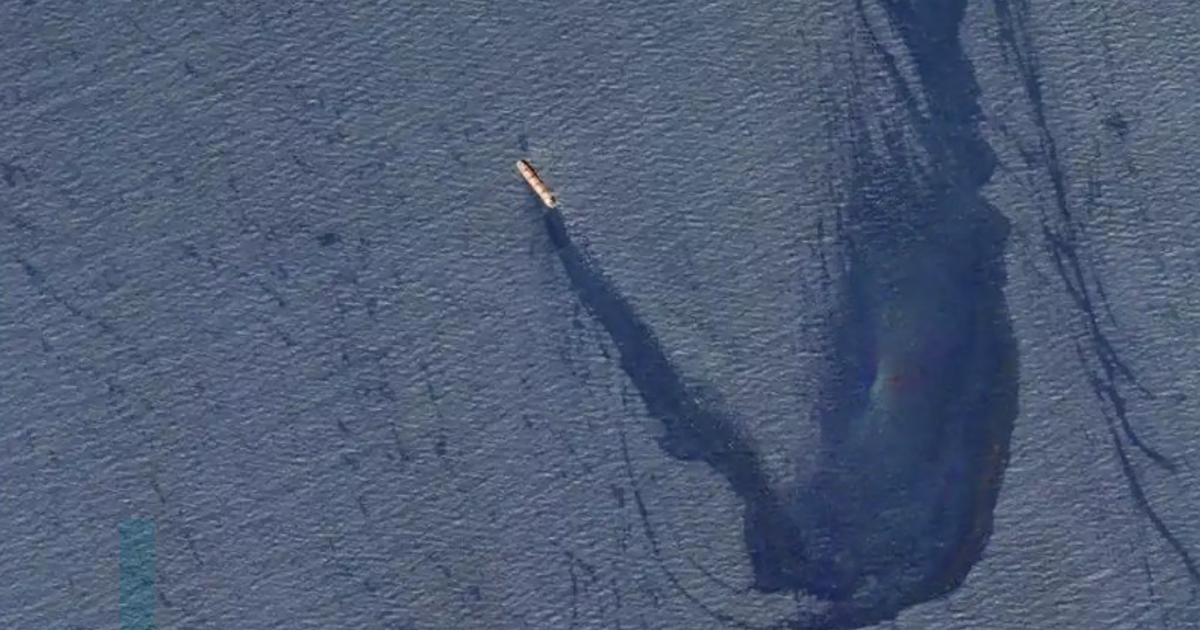An area of the Costa de la Luz invaded by the 'Oenothera drummondii'. J.B Gallego-Fernández
When the Rota naval base began to become one of the main military installations in Southern Europe, as a result of the Madrid Pact, signed by the governments of dictator Francisco Franco and the United States in 1953, the arrival in the area was also recorded. from an unwanted creeper with pale gray-green leaves and yellow flowers:
Oenothera drummondii
.
This plant, typical of the North American coast and tropical climates, thanks to an extraordinary capacity for adaptation and with the surprising help of hares and rabbits, which act as unexpected sowers, has colonized the Atlantic coast, especially the Gulf of Cádiz and parts of the Country Basque, to the point of altering the dune system and the ecosystem that depends on it.
"It is a serious problem and we must act now," says Juan Bautista Gallego-Fernández, researcher at the Functional Ecology of Terrestrial and Aquatic Ecosystems group at the University of Seville.
The origin of the invasion is not precisely known, but the hypothesis that it arrived with the American fleet in Rota is based on the fact that, in Australia, where it is also invasive, as in South Africa, China and Israel, its colonization coincided with the activity of North American coal ships that released their ballast on that coast.
25 years ago, a colleague of Gallego-Fernández showed him a specimen of this plant, which was still a minority at the time.
The species caught the researcher's attention and, finally, a study was undertaken with the collaboration of the Mexican institute of ecology Inecol and the National Autonomous University of Mexico, which was completed last year and has been published in
Plant Physiology and Biocheistry
,
according to disseminated by the University of Seville and the Discover Foundation.
The conclusion is that this plant, singular a few decades ago, has come to invade the east and southeast of the Gulf of Cádiz, with a special presence on the Cadiz coasts of Chiclana and Chipiona as well as on the coast of Huelva.
In this last province, in the area of the Juan Carlos I Breakwater, more than three million specimens have been observed.
In the area of the Juan Carlos I breakwater in Huelva, more than three million specimens have been observed
The invasion of the
Oenothera drummondii
has efficient weapons.
Despite being typical of humid tropical climates, it has adapted well to the drought in southern Spain with strategies such as taking advantage of the low rainfall and high levels of solar radiation better than some native plants, such as the
Achillea
maritime
.
lose the leaves during the summer to recover them in autumn, have 0.6% of seeds capable of surviving floating in seawater until the wind and tides carry them to the sand or a high photosynthesis capacity, among others abilities.
But the most unique of invasive tactics has been unexpected and has been found in local animals.
The plant, which itself has a limited spreading capacity, serves as food for rabbits and hares, which ingest the seeds and defecate them in optimal conditions for their reproduction.
Between 63% and 73% of these excreted fruits can germinate.
This collaboration has facilitated the conquest.
"The plant has occupied the space of other native plants and has altered diversity, reducing the number of unique species and facilitating the presence of other common ones," explains Gallego-Fernández, who adds that the proliferation of
Oenothera drummondii
also modifies the microorganisms of the soil and ends up affecting not only the vegetation cover but also the fauna and flora of the fragile Spanish dune ecosystems
.
As if that were not enough, wherever it arrives, this invasive plant occupies most of the space in the area of the dune with plant cover and, being creeping, alters the natural movements caused by the wind on the sand.
The autochthonous species
Ammophila arenaria
or reed grows in sandy soils thanks to a very deep root system that helps to fix the littoral dunes, which grow in height due to the presence of this obstacle.
The same happens with the
Otanthus maritimus,
a rhizomatous plant with stems that reach up to half a meter in height.
Gallego-Fernández's investigations showed that the presence of these plants typical of the European Atlantic is significantly reduced by the invasion of
Oenothera drummondii
and that
other native species are eliminated.
Without these specimens of their own, the dunes lose height and become soft sandy mounds, thus unprotecting the areas located behind and, according to the scientist, "reducing a type of habitat exclusive to very abundant native species and with a very relevant role in the sedimentary dynamics ”.
"The change in the structure and composition of the community could have a domino effect on the biodiversity of the coastal dunes and must be carefully monitored and mitigated", concludes the researcher from the University of Seville.
After the invasion, Gallego-Fernández believes that it is time to organize defenses.
"You cannot lose sight of this plant," he warns.
To control its expansion, it proposes to establish an alert system and contain where it is.
The surveillance of the personnel of the Doñana National Park, with a coastal strip located right between the already colonized areas, has made it possible to eradicate it in the few places where it was located.
In addition, it suggests the introduction of its own woody plant species that resist and limit the expansion of the American plant.
Of the 7,880 kilometers of coastline in Spain, according to a publication of the Ministry for the Ecological Transition and the Demographic Challenge, 45% have dune systems.
To the presence of invasive plants must be added threats that they are already suffering, such as the extraction of sand and groundwater, agricultural, livestock and forestry uses, urbanizations and works and unauthorized recreational activities.
According to research published in
Ibis
by Miguel Ángel Gómez-Serrano, from the Department of Microbiology and Ecology at the University of Valencia, the presence of people, and especially when they are accompanied by dogs, has a strong impact on the fauna of the dunes.
The study detects that walkers, when crossing the beach through areas with dunes, scare 47% of the birds that are incubating in the area, while they only scare 13% when they do so on authorized paths.
When they are accompanied by their pets, the behavior of the birds changes drastically, and 94% flee.
You can follow
MATERIA
on
,
,
or subscribe here to our
newsletter

/cloudfront-eu-central-1.images.arcpublishing.com/prisa/6TSZVHETCNARBB5KA4WGGWC7XU.JPG)
/cloudfront-eu-central-1.images.arcpublishing.com/prisa/LICFOABLMFBFZJ5EDBCNVTC35U.jpg)


/cloudfront-eu-central-1.images.arcpublishing.com/prisa/RGXZZ7HKWRCKLCNNNFDNLABHZI.jpg)



